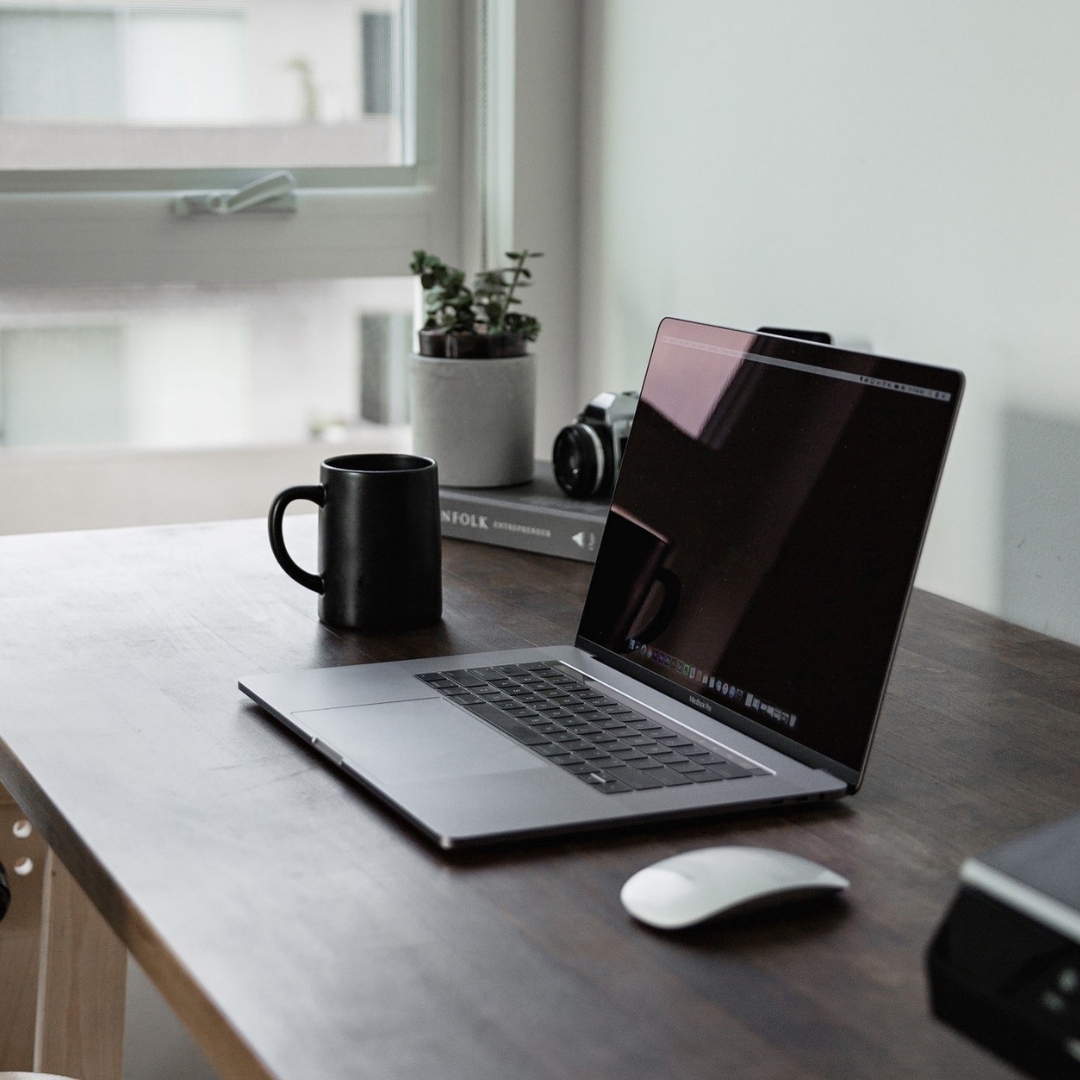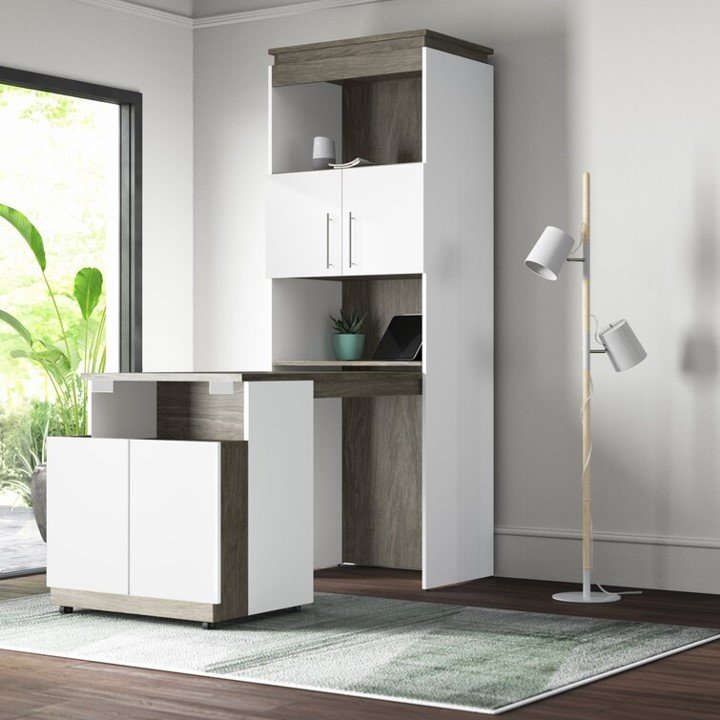By Bash Sarmiento
A growing number of workers have begun to work remotely in the 21st century.
As businesses are shifting to the digital world, work-from-home opportunities are increasing as well.
Ken Tomita
Many employees prefer a remote setup as it saves on transportation costs, not to mention the time and energy needed for a long commute.
Even established businesses and start-ups are beginning to see the value in hiring remote workers because they can save on operational expenses such as rent and electricity.
Working from home is a good set-up if you have a dedicated space for work.
Business owners and employees can improve their productivity in a stress-free environment that allows them to focus on their daily goals.
Scott Graham
Organizing a home office can help with this productivity, especially if you are sharing the space with a person you live with.
Here are some tips on how you can ensure your productivity while co-working in a small home office.
Affiliate Disclosure: This post may contain affiliate links, which means I may receive a small commission, at no cost to you, if you make a purchase through a link.
1. Maximize the space.
A small space will look cramped and feel uncomfortable if you pack it with desks, filing cabinets, bookshelves, and so on.
However, it doesn’t mean that you shouldn’t put anything in it!
To maximize the space, you can go for small-scale furniture.
Use desks that can be placed along the walls. This way, each person working in the small office can have a dedicated desk.
You can also opt for a Murphy desk, which is a wall-mounted or foldable desk that you can tuck away when you are not using it.
Keep in mind that since it’s a co-working space, you’ll need comfortable chairs for each of you.
Choose ergonomic chairs that won’t take up too much space but will provide ample support for your back and neck during a long workday.
Since you’re working from home, you won’t need to put a kitchen or a lounge inside the office space.
This way, you can focus on work the whole day, and go out of the room when you need a break.
2. Organize your files.
Another thing you should consider for remaining productive in a small home office is how you’ll organize your files.
Since you’re working in a small space, avoid placing wide bookshelves and file organizers.
Instead, you can opt for corner shelves that can hold your books and files in one place.
Avoiding large shelves will give you more space to move around. It will also improve the airflow and allow light to penetrate more spaces in the office.
If you’re working with sensitive information, consider getting a security program to store all your digital files.
These files should be stored in an external hard drive or server which is securely placed near your desk.
3. Go minimalist.
In a small space, a minimalist design is recommended.
This will make the space feel roomier and lighter.
You can achieve a minimalist style by choosing light, neutral colors for the walls and furniture.
Karolina Grabowska
White, beige, sand, and grey tones will work well in a home office.
Avoid putting too many unnecessary objects in the room as these will just become distractions.
Too many objects in the workspace will affect your productivity, as you’ll tend to tinker with these things and lose focus.
Remember you’re working from home… You can step out of the room for a few minutes if you need a quick break from work.
You can place a few objects on your desk to accent it, but don’t overdo it.
Enovate Studio
A small indoor plant and a picture of your favorite people (or pets!) can help balance out your desk.
These small things will help you find inspiration when you are feeling unproductive but won’t cause you to get too distracted from your work.
4. Have good lighting.
Natural light is the best light while working.
It will make the room feel more spacious.
Aside from that, in a room with natural light, you won’t feel as if you are cooped up in a box all day long.
Daan Steven
You can achieve this by placing your desks near a window so that the light will flow through it.
If you don’t have a window in the room, create lighting that mimics sunlight. This can be achieved by using LED lights that have warm tones.
Some LED lights are aptly labeled daylight or sunlight to imitate natural light.
5. Create a schedule that works.
Lastly, when co-working in a small home office, the best way to ensure productivity is by working on a schedule.
This means that if one of you has a meeting, you need to inform your co-worker.
Julia M Cameron
You could either “book” the room for a bit or just make sure that there is no background noise while the meeting is ongoing.
Creating a schedule will help you minimize distractions, avoid interruptions, and boost productivity.
The Bottom Line
There is no single standard for creating the perfect home office.
How you organize your small home office will depend on your style and work requirements.
Make sure that you have all the basic equipment and furnishings you need to be productive, add a small personal touch, and you are good to go!
Join the Fun!
If you enjoyed this post and you want to keep seeing my weekly blog, the best way to do that is to subscribe.
You can subscribe by downloading my 11 Secrets Only Designers Know to Make Your Space Rock. If you’re curious about how decorators and designers make a home look magazine ready, you’ll love taking a gander at these 11 secrets. You’ll learn how to style your room from the floor up and it will work for ANY space you have.
I write about small space design and decorating, sustainable furniture options, positive self care and a variety of do-it-yourself home décor.
I’d love to connect with you!
“Michael Helwig was top-notch, very professional and responsive to my needs. He allowed me time to explore ideas and try out a variety of combinations until we found the perfect fit. Michael provided detailed information and offered beautiful ideas to make my dream living room become a reality. The furniture he sourced has totally transformed my living room space. Everyone that has seen my new living room has one word, WOW! A special thank you to Michael for a wonderful experience.”
“Michael was very knowledgeable and guided us, with great patience and good humor, through the process of designing our dining room and helping us find the perfect sleeper sofa. He offered really helpful advice when we asked questions - which was often - but at no time did we ever feel pushed. He helped me when I felt like I couldn’t make one more decision. When my new furniture finally arrived I realized everything down to the pillows was perfect. I couldn’t be happier!”
Dillon Shook
Bash Sarmiento is a writer and an educator from Manila. He writes laconic pieces in the education, lifestyle and health realms. His academic background and extensive experience in teaching, textbook evaluation, business management and traveling are translated in his works.
The opinions and views expressed in any guest blog post do not necessarily reflect those of Michael Helwig Interiors or its Principal, Michael Helwig. Michael Helwig Interiors, and Michael Helwig, do not have any affiliations with any products or services mentioned in the article or linked to therein. Guest Authors may have affiliations to products mentioned or linked to in their author bios.


















